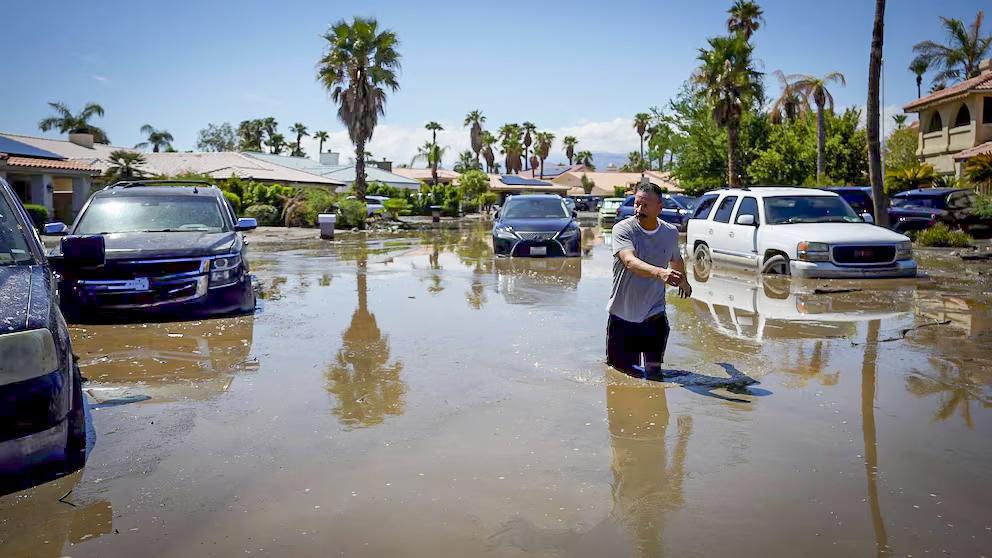
Covering Hurricanes: A Guide to Journalist Safety
Journalists covering hurricanes perform essential work, documenting events that shape communities and save lives. But hurricanes present some of the most dangerous conditions a reporter can face. Preparation, mitigation, and respect for storm-stricken communities are essential to staying safe while doing the job.
This guide breaks down hurricane safety chronologically—from newsroom planning before hurricane season to navigating the aftermath—highlighting hazards and mitigation techniques at each stage.
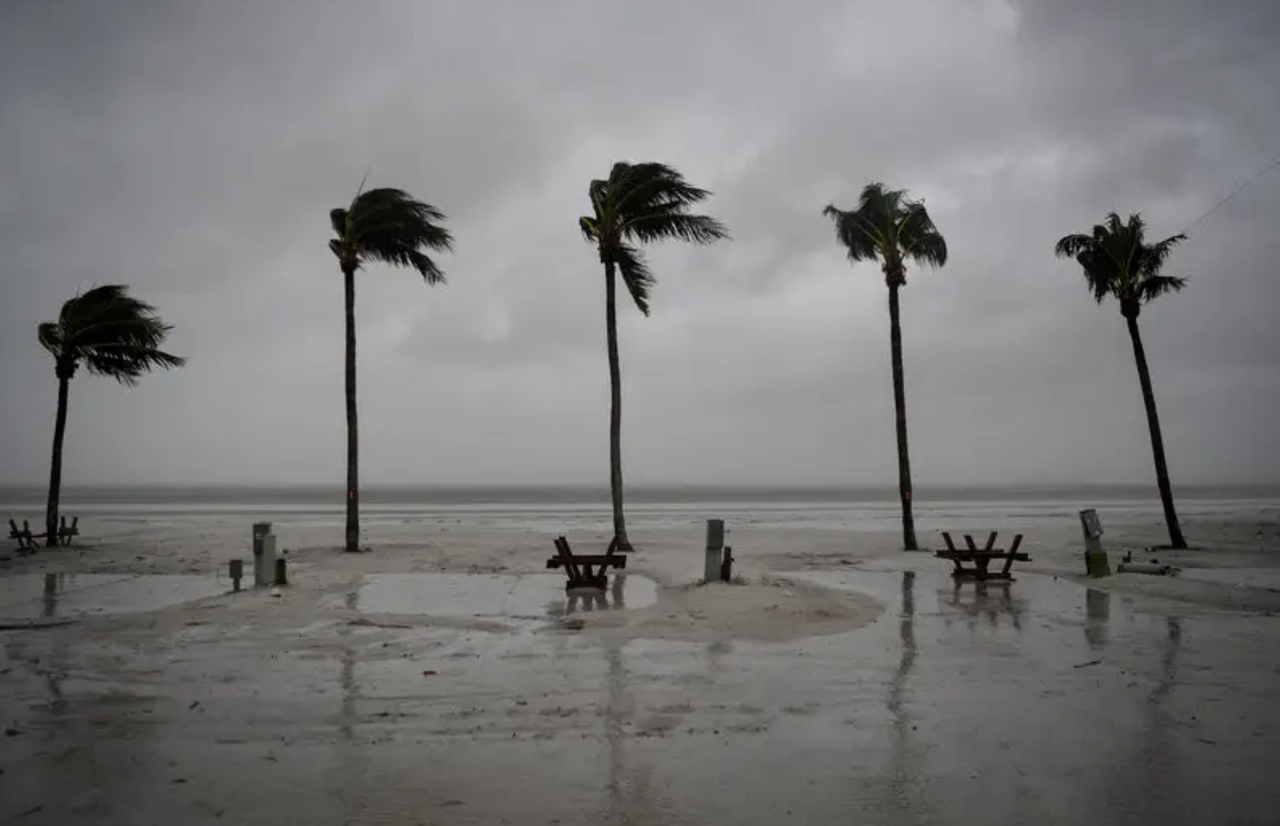
1. Newsroom Preparedness Before Hurricane Season
Every newsroom should have safety and security guidelines in place well before the first storm forms. This includes establishing newsroom objectives and expectations for safety, such as clearly defined standards for risk tolerance, support resources, and limits on field exposure. This includes:
- Establishing clear check-in procedures and communication redundancies (satellite phones, messaging devices, two-way radios).
- Maintaining a roster of staff trained in hostile environment first aid.
- Creating pre-approved evacuation and extraction plans.
- Stocking newsroom “go kits” with first aid, communications tools, and basic protective equipment.
- Early preparation ensures staff do not improvise under duress.
2. Generic Pre-Storm Preparation
When a storm is forecast, journalists should:
- Research official sources. Rely on trusted hurricane centers and local emergency management sites. Use social media for research and information, but do not reply on accuracy for safe operation.
- Prepare a go-bag. Include protective equipment and clothing, foul-weather gear, boots, gloves, toiletries, medication, first aid, and emergency vehicle supplies.
- Secure cash. ATMs and card readers may fail; carry enough to cover hotels, fuel, and meals.
- Vaccinations and health. Update tetanus shots; floods expose journalists to bacteria and contaminants.
3. Final Preparation and Risk Assessment Before Deployment
Before leaving for assignment:
- Conduct a newsroom risk assessment: location, surge predictions, wind zones, evacuation routes, and available shelters. (Google Map downloads)
- Ensure all communications are tested: sat phones, GPS, and backup power. If traditional cell service collapses, SMS often works longer.
- Assign staff roles (reporting, safety officer, driver, fixer) and establish rally points.
4. Transportation and Equipment Requirements
Safe transport is critical:
· Vehicles. Choose insured, reliable vehicles. Large SUVs are often used in storm coverage. Pros include higher ground clearance for navigating debris-strewn roads, better traction in wet or flooded areas, and ample cargo space for gear and supplies. Cons include poor fuel economy, difficulty maneuvering in tight or damaged urban areas, and the risk of overconfidence in water crossings where even SUVs can be swept away. Keep tanks full before landfall; fuel shortages are common. Vehicle safety gear, such as tire repair kits (Fix-a-flat), tow straps, extra fuel containers, and jumper cables, should also be part of the loadout.
· Navigation. Carry paper maps and compasses—GPS may fail. Sources for paper maps include state highway rest stops, local outdoor retailers, and pre-downloaded maps from services like Google Maps or other navigation apps that allow offline use.
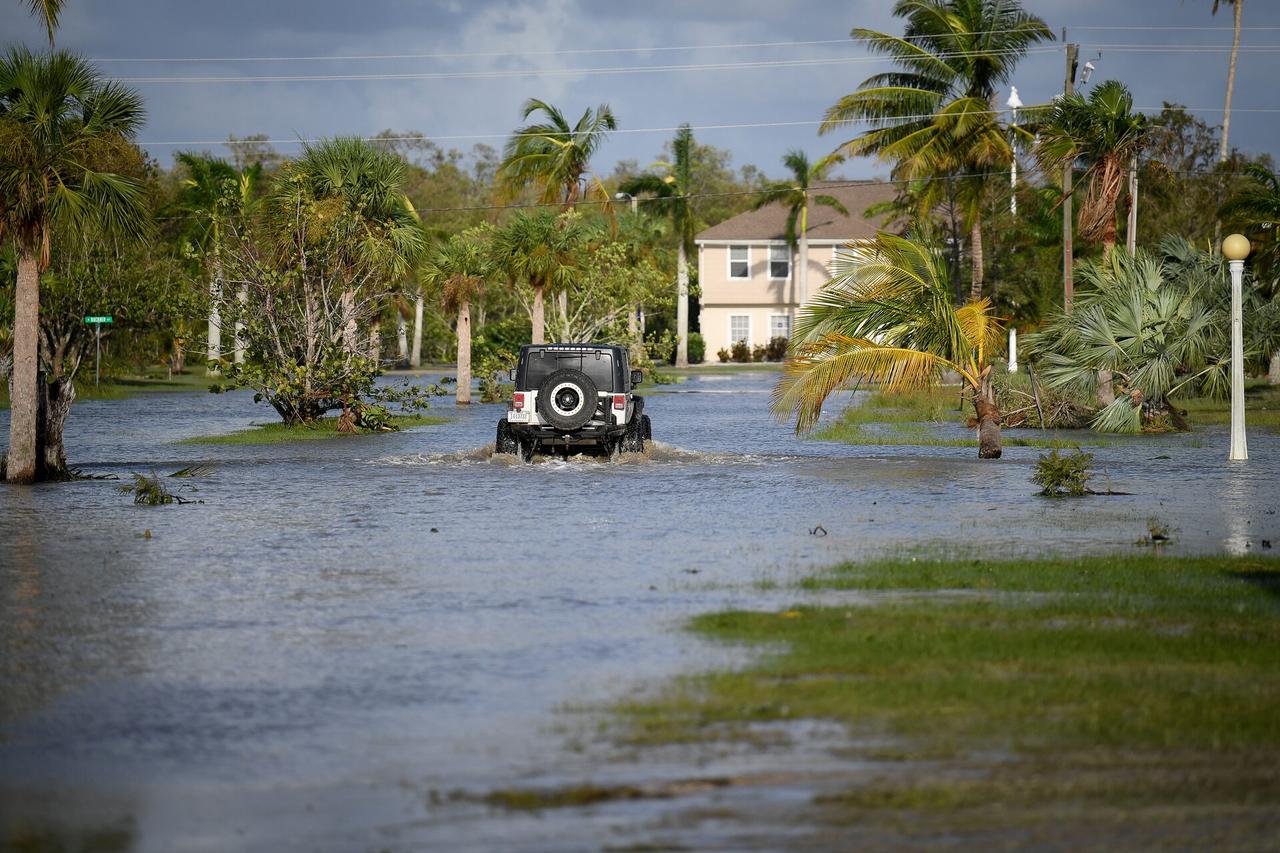
· Safety gear. USCG approved life preserver, helmets, high-visibility vests, respirators, sturdy boots, and goggles are essential. Hip waders can be useful for navigating shallow floodwaters by keeping clothes dry and adding protection from contaminants, but they also carry risks: if they fill with water after a slip or fall, they can become heavy and dangerous, potentially dragging a person down. They should be used cautiously and only in appropriate conditions.
5. Food, Fuel, Safety, and Sustenance
- Carry at least three days of food and water. Do not rely on tap water; it may be contaminated.
- Use filters water filters or purification tablets.
- Pack a small generator or car inverter for power, but always operate generators outdoors or in well-ventilated areas to prevent carbon monoxide poisoning, keep them dry to avoid electrocution, and store fuel safely away from living spaces.
- Bring hygiene items like wipes and sanitizer to avoid infection when water is scarce.
6. Hazards During the Storm
- Storm Surge (Most Dangerous).Surge can reach dozens of feet high and flood miles inland. Journalists have been trapped by rising water, sometimes with little warning. Never stay in shoreline hotels or riverside areas. Always prioritize elevation and distance.
- This video illustrates how quickly conditions can overwhelm crews: https://www.youtube.com/watch?v=2TyNDhLK4ho.
- High Winds. Winds exceed 100 mph, hurling debris like stop signs and shingles. Journalists should never be outside during peak winds.
- Flooding. Just 12 inches of water can sweep away a small car; two feet can carry off trucks. Never drive into floodwaters.
- Flying Debris. Wear eye protection and helmets; debris is one of the leading causes of storm injuries.
- Mitigation Techniques:
- Take shelter well before conditions worsen.
- Avoid venturing out during the calm “eye” of the storm—it is temporary.
- Choose hotels on the leeward side, in lower floors (but not basements).

7. Riding Out the Storm
When the storm peaks:
- Stay sheltered in a hotel or designated shelter. Emergency operations centers are safest if accessible. Above-ground parking structures can also provide good shelter if they are reinforced, elevated, and away from flood-prone zones.
- Never attempt to broadcast from outside during hurricane-force winds.
- Protect communications equipment from water intrusion.
8. Re-Entering the Field After the Storm
It is only safe to re-enter once conditions stabilize: winds drop, emergency officials issue clearance, and hazards are manageable.
Aftermath Hazards:
- Standing Water may hide hazards. May conceal sinkholes, open manholes, sharp debris, or live wires. Always test ground with a stick or pole before entering.
- Contaminated Water. DO NOT ENTER STANDING WATER; wear protective boots and avoid exposure. Skin contact can cause near immediate infection, so any open wounds should be covered and waterproof protection used at all times.
- Driving Hazards. Roads may be blocked by sand, debris, or downed lines. Never drive at night unless cleared.
- Crime and Tension. Looting and desperation may occur. Journalists should remain low-profile and respectful.
9. Living in a Nonpermissive Environment
Journalists must learn to self-sustain to avoid burdening storm-stricken communities:
- Bring sufficient supplies; do not rely on locals communities suffering the aftermath of a storm.
- Eat only packaged or boiled foods if water contamination is suspected.
- Wash thoroughly after exposure to floodwaters.
- Work in teams; never travel alone.
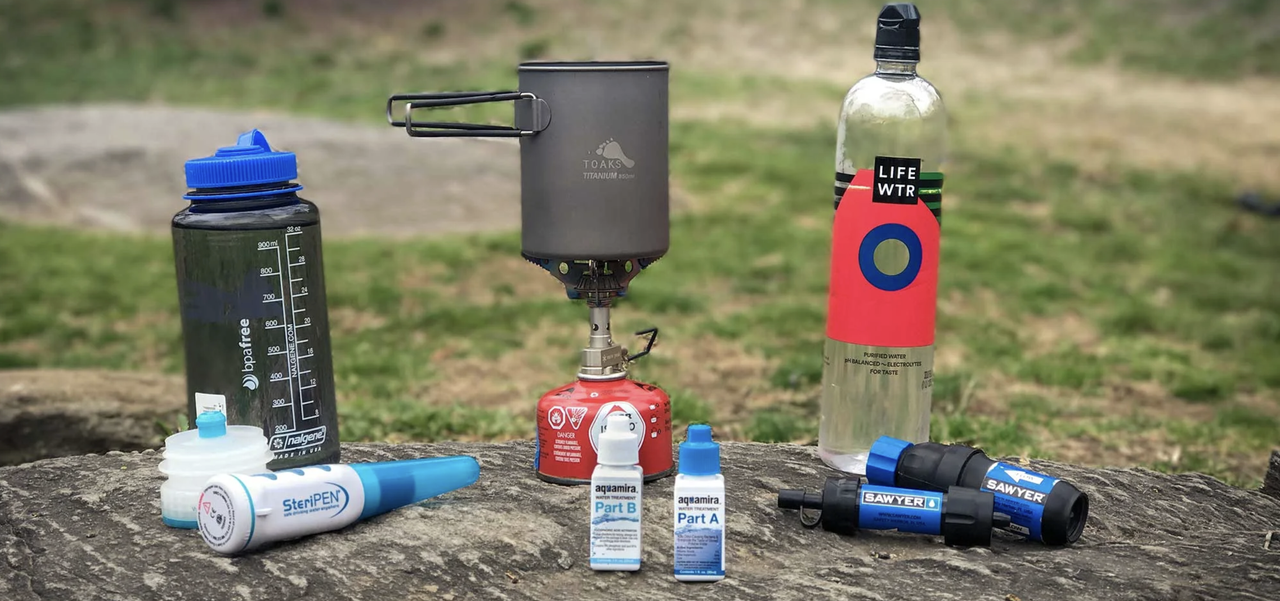
10. Communication Strategies
Establish a communication plan before deployment. This should outline:
- Who to contact during all phases of the assignment (editors, family, and emergency contacts).
- How often check-ins must occur (even with nothing new to report) and what to do if a check-in is missed.
- What methods of communication are primary (cell, SMS, satellite phone, messaging device) and which are secondary backups.
- Contingency measures for complete communication failure, including rally points and fallback reporting times.
- Documentation of all contact details and clear sharing of these protocols with newsroom supervisors before departure.
- Expect grid collapse; most cell towers may last only a few hours on backup power.
- Resume updates as soon as connectivity returns.
11. Special Considerations for Freelance Journalists
The requirements and safety standards for covering hurricanes remain the same for all journalists, regardless of whether they are part of a large newsroom or working independently. The difference is that freelancers must meet these standards within the resources and parameters they can provide for themselves.
Key considerations include:
· Lack of institutional support.Freelancers cannot rely on newsroom-issued go-kits, logistics teams, or safety officers. They must be entirely self-sufficient.
· Insurance and risk coverage. Seek insurance policies that cover health, equipment, and evacuation.
· Contingency planning. Develop personal evacuation and safety plans, including alternative routes and safe havens.
· Peer networks. Establish accountability partners among trusted colleagues for check-ins and emergency support.
· Independent communication plan. Identify at least two trusted contacts (family or colleagues) for scheduled check-ins. Share travel and lodging details in advance. Define what actions contacts should take if a check-in is missed. Use satellite messengers or GPS trackers when possible to allow location sharing.
· Agreements with editors. Clarify safety expectations and risk tolerance with commissioning editors before deployment to prevent unsafe pressure.
These are just a few of the steps to help freelancers mitigate risks and avoid unnecessary exposure while on assignment covering natural disaster.
12. Essential Checklist for Journalists (Quick Link to our Hurricane Safety Kit)
Personal Safety Equipment:
· Waterproof outerwear, rain jackets, pants, and insulated layers
· Steel-toe waterproof boots with slip-resistant soles
· Work gloves (cut-resistant and waterproof)
· Safety goggles or ballistic-rated protective eyewear
· USCG-approved life jacket or personal flotation device
· Hip waders (used cautiously)
· Headlamp with spare batteries and waterproof flashlight
· Pocket multi-tool and folding knife
· Waterproof dry bags for electronics and documents
Medical and First Aid:
· Fully stocked trauma first aid kit (tourniquets, trauma dressings, bandages, antiseptics, chest seals)
· Prescription medications in waterproof containers
· Antibiotic ointments and oral rehydration salts
· Hand sanitizer and disinfectant wipes
Sustenance and Hygiene:
· Minimum three days of packaged, non-perishable food
*recommend dry or canned food, MRE as last resort
· Minimum three gallons of bottled water per person
· Water purification tablets and portable water filter
· Camping stove or compact cooking system with fuel
· Wet wipes, hand sanitizer, and biodegradable soap
· Toiletries and sanitary products
Communications and Navigation:
· Satellite phone and/or satellite messenger device
· Extra mobile phone with power bank
· Two-way radios or handheld VHF radios
· Paper maps and compass, plus offline digital maps
· Whistle and signal mirror for emergency signaling
Power and Lighting:
· Portable generator or car inverter (with safety protocols)
· Fuel reserves stored in approved containers
· Solar chargers and power banks
· Extra batteries (AA, AAA, and device-specific)
Vehicle Safety Gear:
· Full-size spare tire, jack, and tire iron
· Tire repair kit and Fix-a-Flat cans
· Tow straps and recovery boards
· Jumper cables and portable jump starter
· 5-gallon fuel jugs with tank extender (stored safely outside passenger cabin)
· Fire extinguisher (ABC-rated)
· Reflective triangles, road flares, and high-visibility flags
· Shovel and foldable saw
Other Essentials:
· Waterproof notebooks and pens/pencils
· Cash, If power is out, cards are usless. No cash, No gas! (in small bills)
· Personal identification, press credentials, and laminated copies
· Comfort items (earplugs, sleep mask, lightweight sleeping bag)
· Lightweight tent or tarp for emergency shelter
· Duct tape, zip ties, and paracord
We find this to be a comprehensive list of useful gear, but journalists should plan ahead, research what works best for them, and learn how to use all equipment properly before heading into harm’s way.
Covering hurricanes is among journalism’s most dangerous assignments. Storm surge, wind, flooding, and aftermath hazards demand preparation, resilience, and humility. With the right guidelines, preparation, and respect for affected communities, journalists can tell the story without becoming part of the crisis.
Our Hostile Environment and First Aid Training (HEFAT) program prepares journalists to face the hazards of covering disasters, protests, and conflict zones. From storm surge survival and flood safety to trauma first aid and digital security, participants gain the skills needed to stay safe while reporting under pressure. Join us for our upcoming HEFAT class and equip yourself with life-saving knowledge designed for today’s frontline reporting.
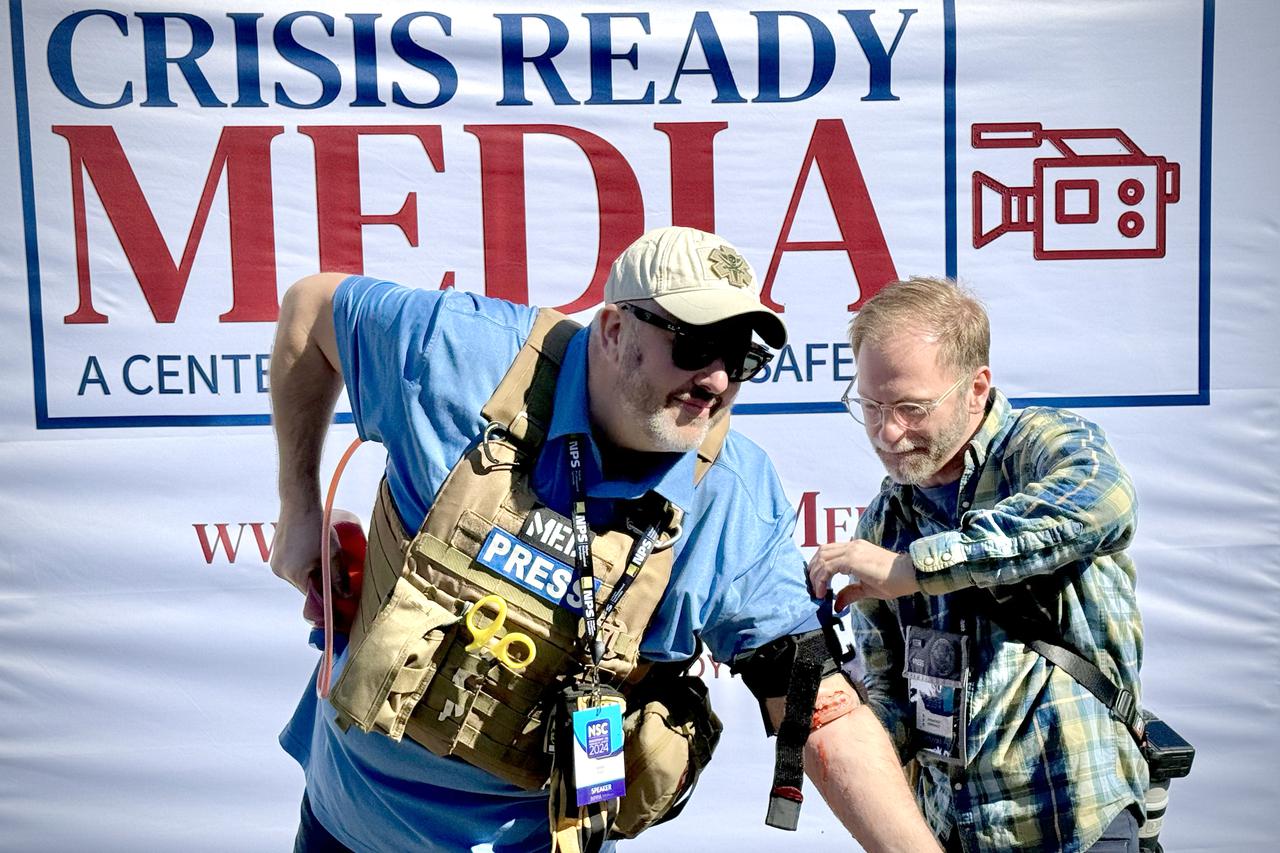
Support Journalist Safety.
Every day, journalists put themselves in harm’s way to bring vital stories to the public. At Crisis Ready Media, we believe every reporter—staff or freelance—deserves access to world-class safety training. Your donation helps us provide scholarships, equip participants with first aid kits, and expand our HEFAT program to reach those with the least resources but the greatest need. Stand with us. Give today, and help ensure journalists return home safe.
